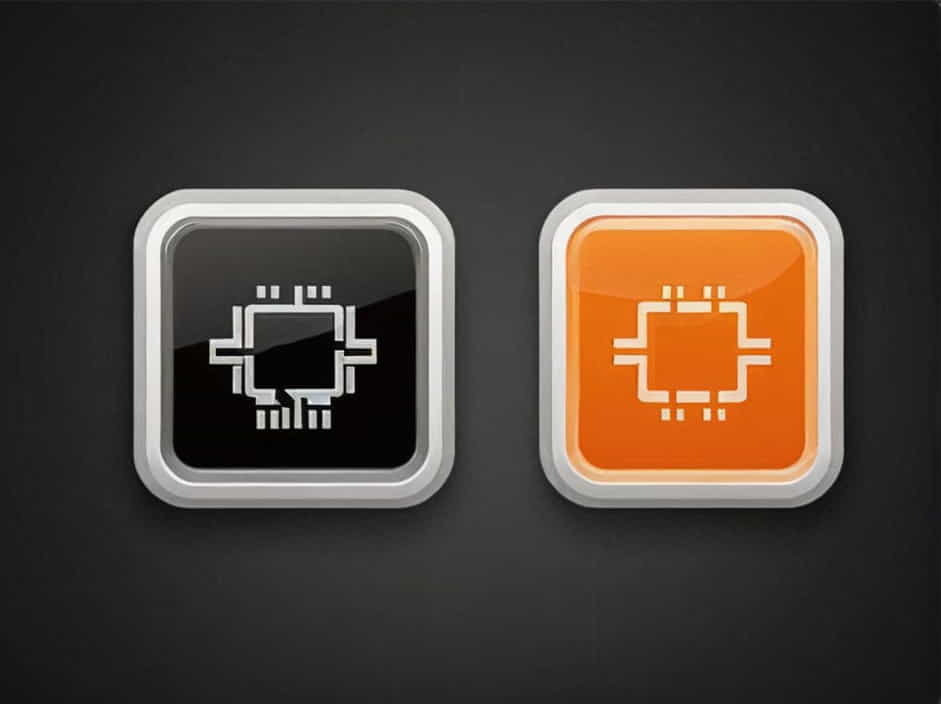In the world of electronics and computing, terms like microprocessor, microcontroller, and microcomputer often come up. While these devices share similarities, they serve different purposes and have distinct features. This topic provides a comprehensive comparison of these three technologies, highlighting their definitions, functions, and applications.
Understanding Microprocessor, Microcontroller, and Microcomputer
What is a Microprocessor?
A microprocessor is the central processing unit (CPU) of a computer on a single integrated circuit (IC). It is a purely processing device and does not include peripherals like memory or input/output (I/O) ports.
Microprocessors are designed to execute instructions and perform arithmetic and logic operations. They are the “brain” of modern computers and are used in devices requiring high-speed processing and multitasking.
Key Features of Microprocessors:
- Requires external components like RAM, ROM, and I/O ports.
- Suitable for general-purpose tasks.
- Optimized for high-performance applications.
What is a Microcontroller?
A microcontroller is a compact integrated circuit that includes a microprocessor, memory (RAM/ROM), and I/O ports, all built into a single chip. It is a self-contained system designed for specific tasks, often used in embedded systems.
Microcontrollers are optimized for controlling specific devices or systems, such as appliances, automobiles, and IoT devices.
Key Features of Microcontrollers:
- Combines CPU, memory, and I/O ports in one chip.
- Ideal for real-time control and embedded systems.
- Energy-efficient and cost-effective for dedicated tasks.
What is a Microcomputer?
A microcomputer is a small, affordable computer that uses a microprocessor as its CPU. Unlike microcontrollers, it is designed for general-purpose computing and includes external components like a monitor, keyboard, and storage.
Microcomputers are widely used in personal and professional settings, ranging from desktops and laptops to tablets and smartphones.
Key Features of Microcomputers:
- Built for general-purpose computing.
- Includes external peripherals for user interaction.
- Capable of multitasking and running complex software.
Differences Between Microprocessor, Microcontroller, and Microcomputer
1. Integration of Components
- Microprocessor: Only contains the CPU; requires external memory, storage, and peripherals.
- Microcontroller: Combines CPU, memory, and peripherals into a single chip.
- Microcomputer: Includes all necessary components for general-purpose computing, often with separate external devices.
2. Purpose
- Microprocessor: Used for high-performance tasks like gaming, data analysis, and running operating systems.
- Microcontroller: Designed for specific applications, such as controlling a motor or managing sensors in an embedded system.
- Microcomputer: Built for general use, including web browsing, gaming, and productivity tasks.
3. Applications
- Microprocessor: Found in PCs, laptops, and high-end servers.
- Microcontroller: Used in washing machines, microwaves, automotive systems, and IoT devices.
- Microcomputer: Commonly seen in desktops, laptops, and tablets.
4. Cost
- Microprocessor: Higher cost due to additional components needed for operation.
- Microcontroller: Cost-effective as it integrates all components into one chip.
- Microcomputer: Varies based on the type (desktop, laptop, etc.) but generally affordable for consumers.
5. Power Consumption
- Microprocessor: Consumes more power due to its high processing capabilities.
- Microcontroller: Energy-efficient, making it suitable for battery-powered devices.
- Microcomputer: Power consumption depends on the type and usage, but it is typically higher than microcontrollers.
Applications of Microprocessors, Microcontrollers, and Microcomputers
Microprocessor Applications
- Personal Computers: The core of modern desktops and laptops.
- Gaming Consoles: Powering high-performance gaming systems.
- Servers: Handling large-scale data processing in businesses.
- Industrial Automation: Managing complex processes and computations.
Microcontroller Applications
- Home Appliances: Found in microwaves, washing machines, and air conditioners.
- Automotive Systems: Controlling engine performance, airbags, and braking systems.
- IoT Devices: Enabling smart devices like thermostats and security cameras.
- Medical Devices: Used in devices like insulin pumps and heart rate monitors.
Microcomputer Applications
- Personal Use: Tasks like browsing, gaming, and word processing.
- Education: Supporting e-learning and research.
- Office Work: Managing spreadsheets, presentations, and communication.
- Entertainment: Streaming movies, music, and playing games.
Advantages and Disadvantages
Microprocessor Advantages and Disadvantages
Advantages:
- High performance and speed.
- Versatile for multiple tasks.
Disadvantages:
- Requires additional components for operation.
- Consumes more power.
Microcontroller Advantages and Disadvantages
Advantages:
- Compact and cost-effective.
- Energy-efficient for dedicated tasks.
Disadvantages:
- Limited processing power.
- Not suitable for multitasking or general-purpose computing.
Microcomputer Advantages and Disadvantages
Advantages:
- Versatile and user-friendly.
- Suitable for a wide range of tasks.
Disadvantages:
- Larger and less energy-efficient than microcontrollers.
- May require more maintenance.
Choosing the Right Technology
When to Use a Microprocessor
Choose a microprocessor when you need high-performance computing, multitasking, or the ability to run complex applications. Examples include building a custom PC or designing advanced computing systems.
When to Use a Microcontroller
A microcontroller is ideal for embedded systems or applications requiring real-time control. Examples include home automation, robotics, and wearable devices.
When to Use a Microcomputer
Microcomputers are best suited for general-purpose tasks and everyday computing needs. Whether it’s for work, education, or entertainment, a microcomputer offers the flexibility and power required.
Future Trends
The fields of microprocessors, microcontrollers, and microcomputers are constantly evolving, driven by advancements in technology. Here are some key trends to watch:
- Artificial Intelligence Integration: Microprocessors and microcontrollers are increasingly being designed with AI capabilities to enhance performance.
- Energy Efficiency: Innovations in low-power designs are making devices more energy-efficient.
- IoT Expansion: Microcontrollers are playing a significant role in the rapid growth of IoT applications.
- Miniaturization: All three technologies are becoming smaller and more powerful, enabling new applications in wearable and portable devices.
Microprocessors, microcontrollers, and microcomputers each serve unique purposes in the world of computing. While microprocessors excel in high-performance tasks, microcontrollers dominate embedded systems, and microcomputers cater to general-purpose use. Understanding their differences and applications helps in selecting the right technology for your needs.
As technology continues to evolve, these devices will remain at the forefront of innovation, driving advancements in various industries and improving our daily lives.
